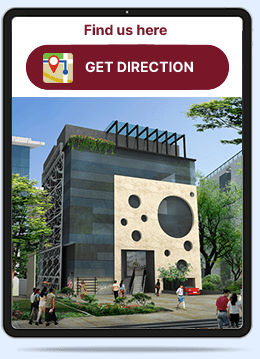Table of Content
Overview of ADD
We definitely have heard the words like ADD and ADHD casually being thrown around just for the sake of it- but what does it really mean to be ADD? What are the symptoms of ADD in children? What is the difference between ADD and ADHD (Yes, there are differences!). Also, what can be done about it once it gets diagnosed and how can you help treat ADD in kids? Read more to find out:
ADD vs. ADHD: What’s the difference?
Attention deficit disorder (ADD) is a term used for the AD part of ADHD, which is, ‘Attention Deficit’. In other words, ADHD is a neurological disorder that leads to a range of behavioral and cognitive problems relating to lack of focus, following and completing basic tasks, and things such as socializing and attention span.
ADD is a somewhat outdated term, which is not really used by medical professionals any longer, it can be used to refer to someone who has a difficult time retaining attention, but doesn’t show symptoms of hyperactivity.
Warning signs of ADD in children
There are usually some telltale signs of ADD, especially noticeable in children. If they are having trouble in academics and social circles in school, maybe this could be the cause. It makes basic tasks and interactions tough to deal with, which naturally hampers their grades and interpersonal lives. If they are seen to procrastinate all the time, in cases of inability to complete their homework and home chores in time.
They could have difficulty in prioritizing tasks which makes them feel like they can’t deal with the workload, which makes them feel even worse about themselves. If you see that they are disorganized as well as unable to keep track of where they’ve kept their things, then perhaps it is a concern.
If they are unable to keep up with their daily schedules on a daily basis, then perhaps it is a concerning thing. The most obvious thing to notice is how it hampers how they seem to have a lack of attention for everything. They are prone not to be able to pay attention in class, as they are easily distracted by random external stimuli.
Perhaps they have become more forgetful than they used to be, which can be seen in some cases such as not turning in assignments that are all ready to go. Lastly, if they are not able to socialize as they should be, as seen in not being able to keep up with conversations, remaining on the same topic as they were talking about, and not paying attention to common social cues.
Some natural ways to help with ADD
If you or a loved one is diagnosed with ADD or ADHD, there are things that can be done to help. ADD treatment includes taking multivitamins can help, as research shows that people with ADHD show a deficit in nutrients, such as zinc, magnesium, and vitamin D. Taking omega-3 fatty acids can also help.
It will also be of help if there is a ceasing of the use of stimulants, such as caffeine or nicotine, which can interfere with sleep cycles, which a lot of people with ADHD have. Exercise definitely will help, around 45 minutes a day will boost blood flow to the brain.
Screen time needs to be regulated for kids, especially for younger children, as this gets them accustomed to the format of not having to pay attention for a longer time. Oftentimes people with the disorder can find themselves seeking conflict and excitement in their lives- it is important to be patient and remain calm with these individuals.
Don’t forget to keep pushing forwards if the treatment plan that has already been prescribed doesn’t work- move on to a different expert. Make sure you are doing the most to be able to help yourself in the best way possible.
Treatment options for children with ADD
There are plenty of options these days when it comes to ADD and ADHD treatment. The struggle can lie in the fact that one may be confused as to which treatment to pick. In these cases, it is best to rely on your healthcare professional and follow the treatment they prescribe.
If it doesn’t seem to be showing any effects, even after a decent amount of time, perhaps you should venture for another appointment and see what is going wrong. If by this attempt nothing changes, then perhaps it will be best to get another opinion on the matter.
The most common treatments that are available are medication, treatments, therapies, and education. Stimulants which increase dopamine levels in the brain are necessary to assist with attention, and they come in the form of methylphenidate or amphetamine. Behavioral therapy is also seen to work very well in cases of children, and so does occupational therapy.
Education for the loved ones and caregivers around is also essential, as it helps them to understand the patient better. They need to be able to learn coping and response strategies to foster a less-stressful environment at home. One thing best to avoid, not just in the case of ADD but for all such disorders, is getting into treatments that don’t have scientific validity or are not prescribed by your healthcare professional.
How Cadabam's Help you for Addiction?
- 410+ Professional Consultants
- 1,00,00+ Happy Faces
- 120+ Currently Seeking Treatments





